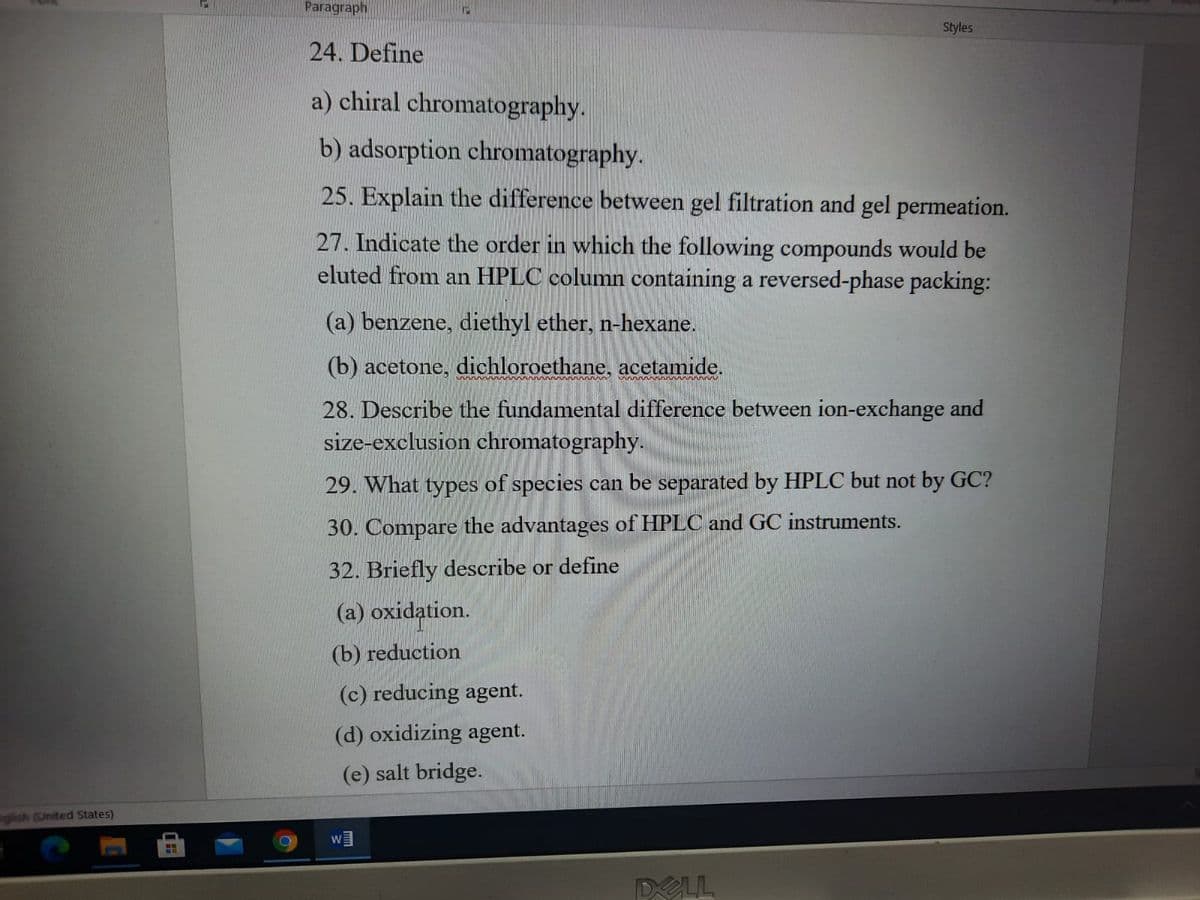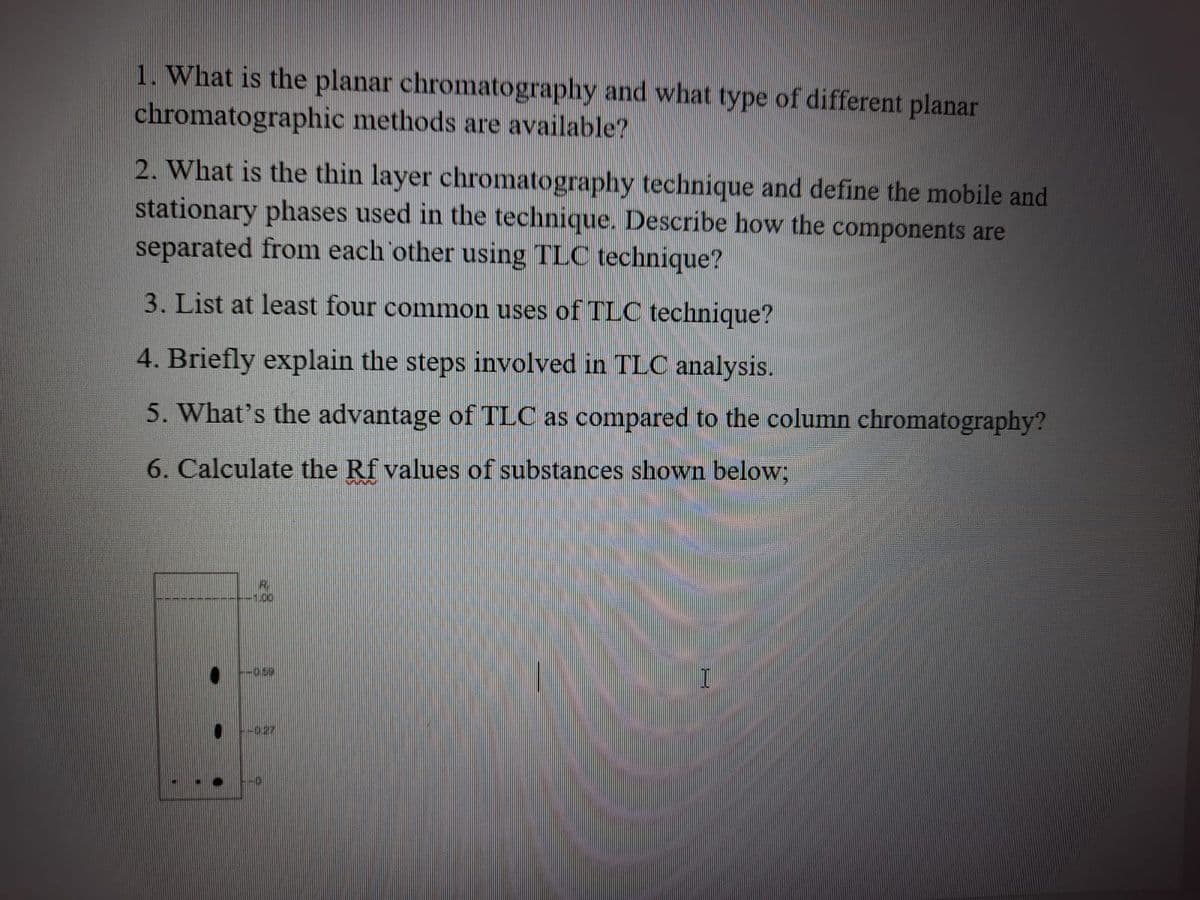Chapter91: Gas Chromatography
Section: Chapter Questions
Problem 1P
Related questions
Question

Transcribed Image Text:Paragraph
Styles
24. Define
a) chiral chromatography.
b) adsorption chromatography.
25. Explain the difference between gel filtration and gel permeation.
27. Indicate the order in which the following compounds would be
eluted from an HPLC column containing a reversed-phase packing:
(a) benzene, diethyl ether, n-hexane.
(b) acetone, dichloroethane, acetamide.
28. Describe the fundamental difference between ion-exchange and
size-exclusion chromatography.
29. What types of species can be separated by HPLC but not by GC?
30. Compare the advantages of HPLC and GC instruments.
32. Briefly describe or define
(a) oxidation.
(b) reduction
(c) reducing agent.
(d) oxidizing agent.
(e) salt bridge.
glish (United States)
W
DELL

Transcribed Image Text:1. What is the planar chromatography and what type of different planar
chromatographic methods are available?
2. What is the thin layer chromatography technique and define the mobile and
stationary phases used in the technique. Describe how the components are
separated from each other using TLC technique?
3. List at least four common uses of TLC technique?
4. Briefly explain the steps involved in TLC analysis.
5. What's the advantage of TLC as compared to the column chromatography?
6. Calculate the Rf values of substances shown below;
-0.59
-027
Expert Solution
This question has been solved!
Explore an expertly crafted, step-by-step solution for a thorough understanding of key concepts.
Step by step
Solved in 3 steps

Knowledge Booster
Learn more about
Need a deep-dive on the concept behind this application? Look no further. Learn more about this topic, chemistry and related others by exploring similar questions and additional content below.Recommended textbooks for you

EBK A SMALL SCALE APPROACH TO ORGANIC L
Chemistry
ISBN:
9781305446021
Author:
Lampman
Publisher:
CENGAGE LEARNING - CONSIGNMENT


Principles of Instrumental Analysis
Chemistry
ISBN:
9781305577213
Author:
Douglas A. Skoog, F. James Holler, Stanley R. Crouch
Publisher:
Cengage Learning

EBK A SMALL SCALE APPROACH TO ORGANIC L
Chemistry
ISBN:
9781305446021
Author:
Lampman
Publisher:
CENGAGE LEARNING - CONSIGNMENT


Principles of Instrumental Analysis
Chemistry
ISBN:
9781305577213
Author:
Douglas A. Skoog, F. James Holler, Stanley R. Crouch
Publisher:
Cengage Learning